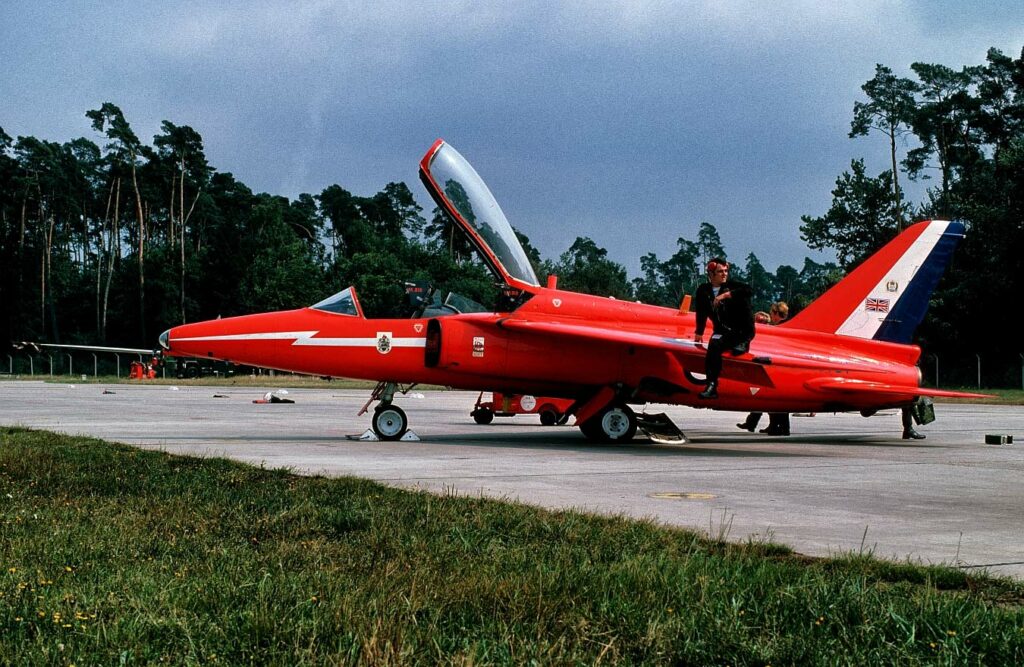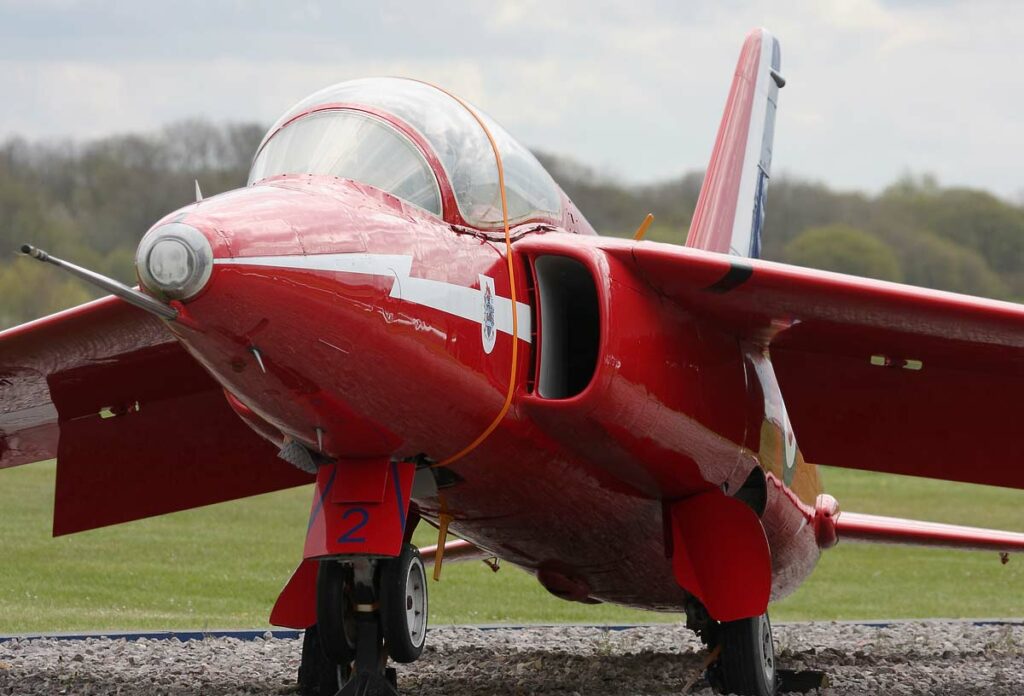The Folland Gnat is a compact, agile jet trainer and light fighter developed by Folland, excelling in maneuverability.
In brief
The Folland Gnat is a British lightweight fighter aircraft developed in the late 1950s by Folland Aircraft, later part of Hawker-Siddeley. Designed initially as a small, cost-effective fighter, it found its niche as an advanced trainer. Powered by a single Bristol Siddeley Orpheus turbojet engine, the Gnat is known for its exceptional agility and ease of handling, characteristics that made it a favorite for aerobatic teams, most notably the RAF’s Red Arrows. The aircraft has a maximum speed of over 700 mph (about 1125 km/h) and an operational range of approximately 500 miles (about 805 km). Its design emphasizes simplicity, low operational costs, and performance, making it a notable aircraft in military aviation history.
The Folland Gnat’s development was driven by the post-WWII era’s evolving military needs, focusing on cost-effective yet capable combat aircraft. Initiated by W.E.W. “Teddy” Petter of Folland Aircraft, the Gnat was conceived as a response to the RAF’s interest in a lightweight fighter that could fulfill roles ranging from interception to ground attack. The program was launched in the mid-1950s, with the prototype first taking to the skies on 18 July 1955. The Gnat’s development aimed to provide a high-performance aircraft with lower procurement and operational costs than its contemporaries. Though it did not become the RAF’s standard fighter, its attributes led to its successful adaptation as a trainer and light attack aircraft.

Design
The Folland Gnat’s design is characterized by its compact dimensions, with a wingspan of 24 feet (about 7.3 meters) and a length of 29 feet (about 8.8 meters). Its airframe was designed to be lightweight, utilizing advanced materials and engineering techniques of the time to minimize weight while maximizing strength. The Gnat features a low-wing configuration, tricycle landing gear, and is powered by a single Bristol Siddeley Orpheus turbojet engine, which provided a thrust-to-weight ratio conducive to high agility and performance. One of the design’s advantages was its ease of maintenance and operation, attributed to its straightforward design and accessible components. However, its small size limited fuel and armament capacity, posing challenges for extended missions and versatility. Despite these drawbacks, the Gnat’s agility and cost-effectiveness brought significant benefits to training and light combat roles.
Performance
The Folland Gnat showcased impressive performance metrics for its era and class. It could reach a maximum speed of 700 mph (about 1125 km/h) at altitude, with a service ceiling exceeding 48,000 feet (about 14,630 meters). Its range of approximately 500 miles (805 km) could be extended with external fuel tanks. These performance characteristics made the Gnat a competent aircraft for a variety of missions, from training new pilots in high-speed jet operations to executing light attack and interception roles. Compared to contemporaries such as the North American T-2 Buckeye trainer or the MiG-15 in light attack roles, the Gnat was more agile and often more cost-effective to operate, though it generally carried less armament or fuel.
Variants
The Folland Gnat saw several variants throughout its service life, including:
- Folland Gnat T.1: The primary trainer variant used by the RAF, adapted with dual controls and optimized for training missions.
- Folland Gnat F.1: The initial fighter version, which saw limited use by the RAF but was operated by other countries.
- HAL Gnat: Licensed and produced in India, this variant included modifications for improved performance and was used both as a trainer and a fighter.

Military Use and Combat
The Folland Gnat earned its combat reputation primarily with the Indian Air Force (IAF), where it was used extensively as a fighter aircraft, particularly during the Indo-Pakistani Wars of 1965 and 1971. Its small size and agility made it a formidable opponent in air-to-air combat, where it was credited with several aerial victories against Pakistani aircraft, including the F-86 Sabre. The Gnat’s role in these conflicts demonstrated its effectiveness in dogfighting and its capability to punch above its weight class. Despite its limited range and payload, its performance in the hands of skilled pilots showcased the aircraft’s potential in combat situations. The Gnat has also been sold to other countries, including Finland and Yugoslavia, further underlining its international appeal.
The Folland Gnat remains a significant aircraft in military aviation history, notable for its compact design, agility, and versatility. As a trainer, it prepared generations of pilots for the demands of jet-powered flight, while its combat variants demonstrated its capabilities in real-world conflicts. The Gnat’s legacy is marked by its influence on pilot training, light attack roles, and its memorable service with aerobatic teams like the Red Arrows, symbolizing its enduring impact on aviation.
Back to the Fighter Jet section.